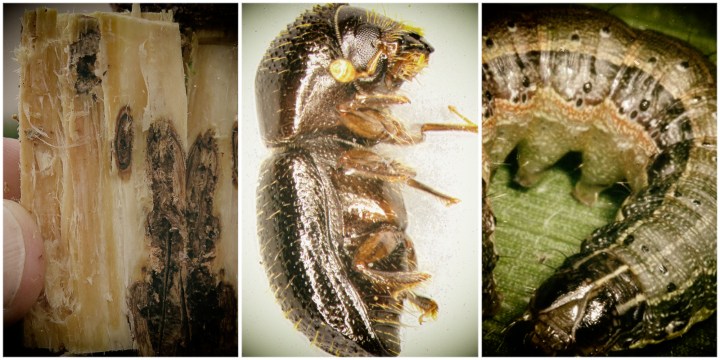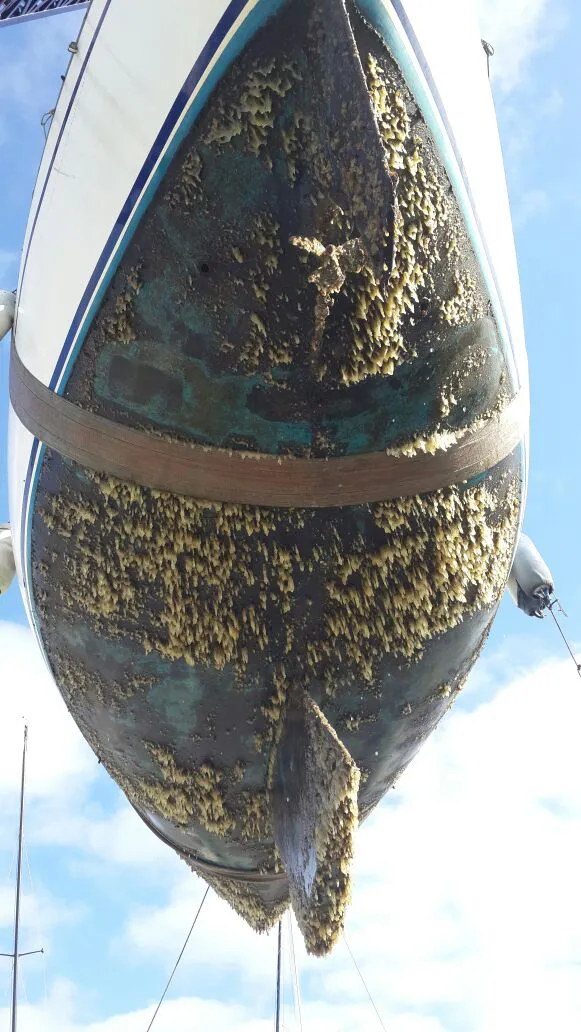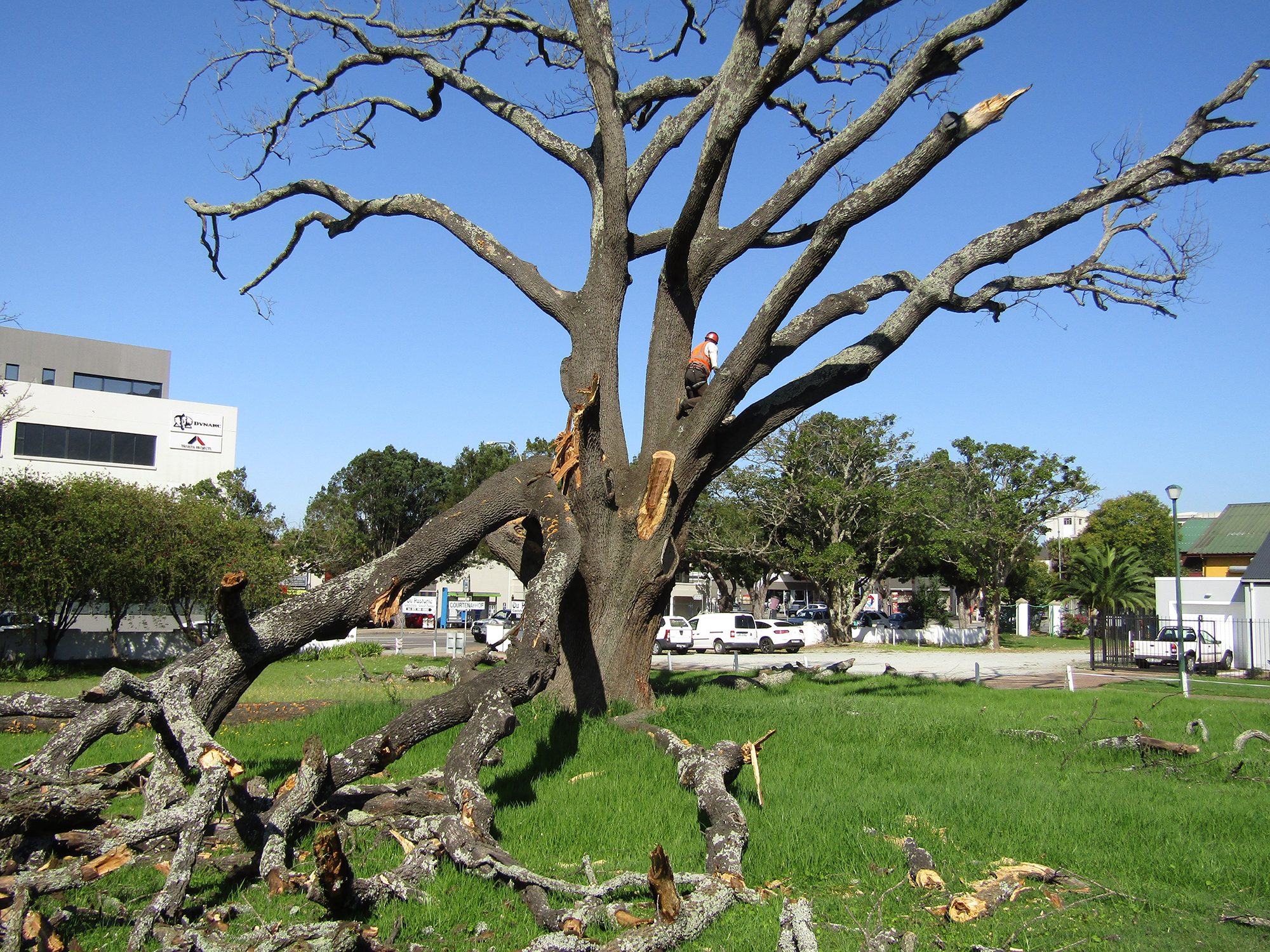OUR BURNING PLANET
Alien invaders: The hidden threat to South Africa’s food, water and wild places

South Africa spends more than R1bn every year to fight an army of alien invader species — but a never-ending task lies ahead to limit the relentless spread of a wide range of foreign organisms that are degrading the country’s water resources, farming lands and rich biological heritage.
Some of the stowaways arrive on our shores by clinging desperately to the submerged bottoms of ships and leisure yachts from the Caribbean or the Mediterranean. Others hitch a ride in the bellies of massive cargo ships, in passenger aircraft holds, trucks or trains.
Many more are also welcomed with open arms due to their bright colours, strange shapes and other novel characteristics.
But because most enter the country without passports or paperwork — or are simply too small to be spotted by the human eye — it is impossible to count just how many invaders arrive in South Africa each year.

The hulls of pleasure yachts, encrusted by a variety of foreign and local marine organisms, are just one of many routes through which alien invader species can sneak into South Africa. (Photo: Tammy Robbinson)
Nevertheless, a new assessment by local scientists has formally classified nearly 2,000 alien species that have established a pretty firm beachhead on our shores and are spreading out to take advantage of a vast hinterland where they have no natural enemies to limit their invasion.
The most noticeable alien invader has been SARS-CoV-2, the tiny virus behind the Covid-19 pandemic that has killed well above 55,000 South Africans over the past year.
But there are many other, less visible and less vilified invaders… tiny beetles, fungi or crop-munching armyworms. Songbirds like the Indian mynah; commercial pine and wattle trees or brightly-coloured lizards imported by pet traders or cold-water foreign fish species like trout that have been described as “chainsaws with fins”.
One notable invader is the polyphagous shot-hole borer (PSHB) beetle (and its symbiotic fungus) from Southeast Asia that is chewing its way northwards after being discovered in Pietermaritzburg in 2017. Since then, it has spread to reach every province except Limpopo and has killed thousands of trees, including several historic specimens around George and Stellenbosch.
Launching the latest science assessment on South Africa’s biological invasions on Friday, national environment minister Barbara Creecy said PSHB looked set to become one of the most damaging and costly biological invasions faced by the country.
Creecy said biological invasions were now the third largest threat to South Africa’s biodiversity after cultivation and land degradation, and thought to be responsible for 25% of all biodiversity loss.
Present estimates showed that if biological invasions on grazing land were not controlled, the country could lose up to 70% of this valuable natural asset.
The latest report from the SA National Biodiversity Institute (SANBI) provides a comprehensive assessment of the status of the invaders and is the only country-level assessment worldwide that focuses specifically on biological invasions.
South Africa occupies only 2% of the world’s land surface area and yet is home to 10% of the world’s plant species and 7% of the reptile, bird and mammal species — many of which are being displaced or threatened by invasive alien species.

This historic oak tree, planted in the town of George in 1884, is one of the casualties of the alien polyphagous shot-hole borer beetle. (Photo: Eugene Gunning, George Herald)
Noting that South Africa already spends more than R1-billion annually to control such invasions, Creecy announced that her department had recently secured a significant injection of funding from the Global Environment Facility.
The funding is made up of about R46-million in grant funding and a further R303-million of in-kind support to strengthen the management of invasive alien species.
Some will be used to tackle eight prioritised invader species and to implement new surveillance and detection measures at border posts. Some will also be used to eradicate the alien house mice that kill the chicks of rare seabird species on Marion Island in the Southern Ocean.
There are more than 70 official ports of entry through which people, goods and transport vessels can enter the country. Eight are maritime ports, 10 are airports and 54 are land border posts.
Currently, however, proper biosecurity control measures are only in place at OR Tambo International Airport, while the remaining ports have very limited or sporadic biosecurity capacity.
The latest scientific assessment finds that there are now at least 1,880 alien species that have established themselves in South Africa, about a third of which have been classified as invasive.
Examples include crop pests such as the tomato leaf miner which was detected in 2016, and the fall armyworm in 2017.
The fall armyworm from North and South America feeds on the leaves and stems of more than 80 plant species, causing major damage to maize, rice, sorghum and sugarcane, but also other vegetable crops and cotton.
It is called an “armyworm” for good reason. In its larval stage, it gathers in huge masses which can destroy large areas of crops overnight, while moths from this species can fly up to 100km a night.
Dr Tsungai Zengeya, lead editor of the SANBI report, said estimates suggest the ecological costs of invasive alien plants and animals to be more than R6.5-billion a year.
The main costs are associated with a decline in ecosystem services such as water and grazing, and in agriculture.
The scientists estimate that invasive trees use up to 3%-5% of South Africa’s surface water runoff each year, a serious problem in an already water-scarce country that is increasingly prone to drought.
While this figure might not seem high, SANBI said scientists calculated that Day Zero in Cape Town was brought forward by 60 days due to invasive trees sucking up water in the region. There are similar impacts in other drought-stricken areas, such as the Eastern Cape.
The report also highlights another significant threat from invasive trees. Because they provide extra wood fuel, they increase the risk and intensity of veld fires such as those that swept through Knysna recently.
SANBI researcher Dr Katelyn Faulkner noted that at least three new invader taxa slip into the country each year, including foreign marine organisms which enter South African waters via ballast water that originated from thousands of kilometres away.
Some organisms also attach themselves to the hulls of ships and leisure craft and recent research in local waters has highlighted the role of recreational yachts, particularly those used for cruising, in the dispersal of marine alien taxa within South Africa.
More than 100 alien plant species have entered South African national parks and game reserves. Most were intentionally introduced to the country as ornamental plants or were dispersed by rivers and animals.
Examples include a freshwater snail (Tarebia granifera) from Southeast Asia, that is dispersing rapidly within the country via aquatic plants and birds or as a stowaway on boats and trailers.
The report emphasises the need for adequate funding and management to tackle alien plant invasions on a consistent and determined basis.
One example comes from a major setback in weed control in the 90,000ha Hluhluwe-iMfolozi Park in KwaZulu-Natal. The alien triffid weed (Chromolaena odorata) was first noticed in the reserve in 1978 and then spread rampantly, to cover more than half of the park by 2003.
After a substantial investment in weed control (R103-million in funding and 2,000 person-years of effort), the invasions were reduced to acceptably low levels by 2011.
However, the success of this operation was now in question as most of the gains had now been reversed “due to a number of complicating factors”, the report notes.
One of the reasons was the tragic death of a field worker who was killed by an elephant. This led to a directive from the Department of Labour that teams would not be allowed to work in the field unless accompanied by an armed guard.
However, due to funding cutbacks in the provincial Ezemvelo KZN Wildlife agency, extra armed guards were not available and it was not possible within the rules of the Extended Public Works Programmes to train and adequately remunerate new armed guards. Because the implementing agency also failed to spend money allocated to the project, funding was withdrawn in line with Treasury rules.
Although alternative sources of funding were subsequently found, this led to a two-year halt in weed control in the reserve — during which Chromolaena reinvaded most of the cleared sites.
“Overall, therefore, the (initial) gains appear to have been reversed, and additional funding, which is unlikely to materialise under current economic conditions, would be needed to bring the situation back under control. This experience illustrates the complexity of alien species control operations, the need for more flexible approaches to be able to deal with them, and the fact that invasions can rebound quickly if maintenance management is not consistently and continuously implemented.”
Creecy has also emphasised the need for a more coordinated approach to tackling the complex problem.
Recognising that this was a multifaceted problem that needed a multifaceted approach, Creecy said there was a need to cut through red tape and the silos of different government departments to arrive at a common national approach.
Accordingly, her department was developing a new policy on the management of biological invasions, supported by a 10-year National Invasive Species Strategy and Action Plan.
The aim of the strategy was to facilitate a more cohesive and collaborative approach by government, industry and the broader community to identify and manage biosecurity risks. The new strategy would be published for public comment and input shortly. DM



















 Become an Insider
Become an Insider
Any strategy without money and political will will fail. We are a dry country and 60 years ago it was predicted that before 21oo the Karoo will reach Gauteng.
The Billion plus that is spent each year on alien control in the context of alien control is like ash in the wind. The most effective project that the Govt has rolled out under the auspices of alien control is the Working on Water program, mostly successful at providing jobs. I do not have a problem with that at all. But like its counterparts in the attempts to maintain biodiversity, there is little capacity to monitor and manage the programs. In effect the money goes out to the program and the efficacy of the program of alien control dwindles from there.
I do not have a solution, but I find it quite unbalanced that while laws are in place to curtail categorised invader species on private land, municipal, provincial and government land seem to be massive perpetrators with infestations of pampas grass, wattles, bug weed, lantana and so on.
The PSHB gogga will threaten food security for sure. Looking at how things are going so far, we may have to change our diets to just eat what is left. I don’t see people or governments really reacting to the science.